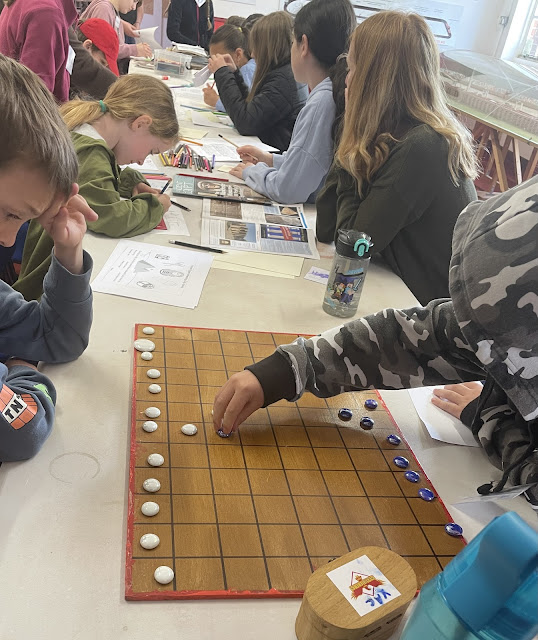We are fascinated with the enchanting objects Emma chose to show.

At our November meeting for the Young Archaeologists' Club, members brought in some interesting objects they discovered in their own garden, High Woods Country Park, and Grandma's garden. These included fossils, an antler, and a leather and metal dagger sheath. Colchester Archaeological Trust archaeologist, Emma, showed us pictures of treasures she had excavated in her work with the trust. Some of them were chance finds, such as the Camulodunum gold coin, which glinted untarnished in the rain sodden ground when she found it. There were chance finds, such as one of the jet bears discovered under a water pipe. These little Roman objects are rare, but three have been unearthed in Colchester so far. Apart from being a professional archeologist, Emma is an artist and illustrator. Some of the pieces she chose to show us were exquisitely fine work, such as the tiny fly image carved into a set stone and the Medusa hair pin head, which had probably kept an elaborate Roman hair do in ...





